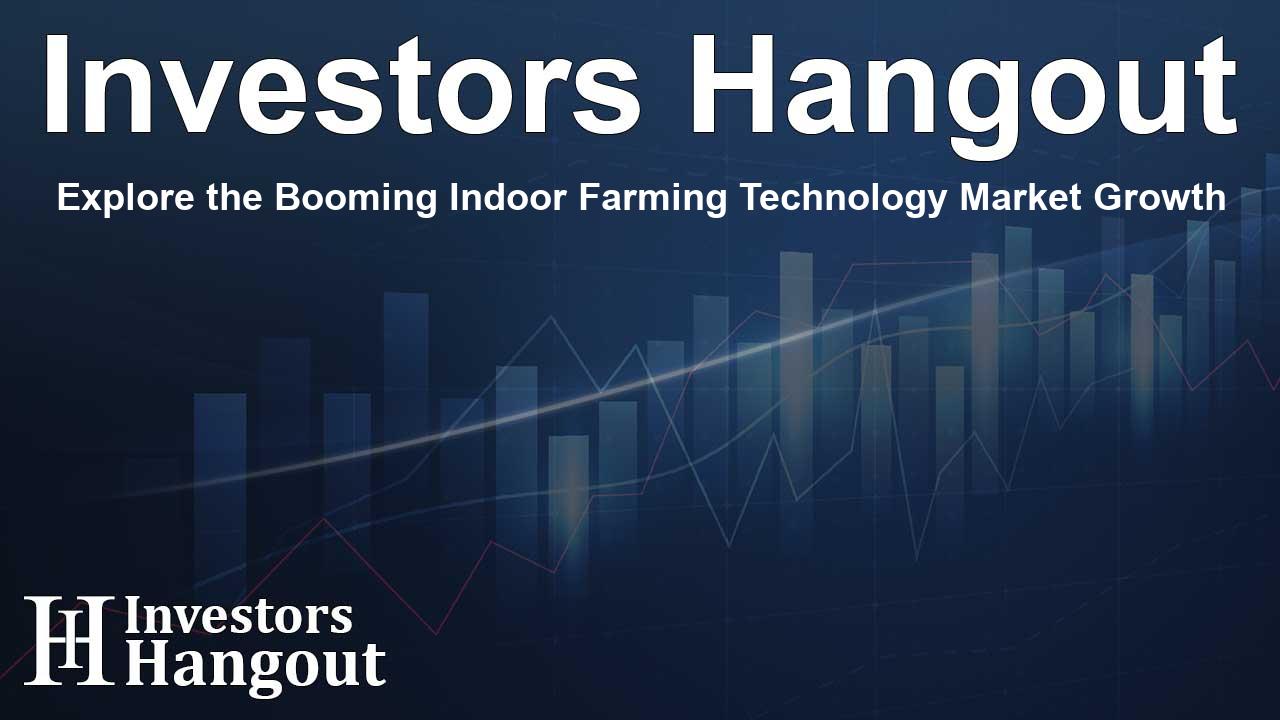Explore the Booming Indoor Farming Technology Market Growth

The Rapid Expansion of Indoor Farming Technology
The indoor farming technology market is undergoing a significant transformation as consumer demand for fresh, locally sourced produce surges. This shift is further propelled by the increasing emphasis on sustainable agricultural practices. Current research shows that the global indoor farming technology market is poised to grow from USD 20.3 billion to USD 32.3 billion, which represents a compound annual growth rate (CAGR) of 9.7%. Such growth reflects the widespread adoption of controlled-environment farming systems globally.
Greenhouses as the Cornerstone of Indoor Farming
Within the sector, glass and poly greenhouses are predicted to lead the market growth. These facilities provide an optimal environment for year-round crop production. The rise of indoor farming can be attributed to several pivotal factors:
Increasing Demand for Fresh Produce
The trend of urbanization coupled with consumer preferences is driving growers toward local and high-quality crop production. Greenhouses allow for greater accessibility to fresh produce for urban populations, enhancing local food systems.
Technological Innovations in Greenhouses
Advancements in climate control, automated irrigation, and other technologies are increasing the efficiency and profitability of greenhouse operations. By leveraging these innovations, growers can maximize their harvests and minimize resource use.
Sustainability Efforts
As environmental concerns continue to mount, greenhouses are gaining popularity for their energy-efficient solutions. These structures contribute to reduced carbon footprints, making them a viable option for eco-conscious consumers and operators.
Impact of Lighting Systems on Growth
Artificial lighting systems are critical to the success of indoor farming technology, particularly in environments where natural sunlight is limited. The right lighting can significantly optimize plant growth. Key aspects of effective lighting systems include:
Quality of Light
Lighting solutions can replicate natural sunlight or be specifically tailored to meet the unique needs of various plant species.
Adjustable Intensity and Duration
Different crops require varying amounts of light, depending on their growth stages and specific photoperiod needs. Proper adjustments optimize growth potential and yield.
Energy Efficiency
Modern lighting technologies focus on reducing energy consumption while maximizing plant growth. This balance is crucial for maintaining cost-effective operations in indoor farms.
North America’s Growing Footprint in Indoor Farming
North America is emerging as one of the fastest-growing regions in the indoor farming industry. Several factors are channeling attention and funding towards this market:
Expansion of Greenhouses and Vertical Farms
The proliferation of innovative urban farming solutions in the U.S. and Canada signifies a substantial shift toward vertical farms and modern greenhouse operations.
Government Incentives and Support
Various government initiatives are encouraging the development of urban farming solutions to enhance food security while fostering innovation within the agriculture sector.
Investment Boom
Following a downturn instigated by the pandemic, the influx of private funding in the indoor farming sector has seen a staggering resurgence, with over USD 1.6 billion invested in the past few years, highlighting investor confidence in this new farming paradigm.
Prominent Players in Indoor Farming Technology
The competitive landscape features a combination of global innovators and regional specialists. Key market players include:
- Scotts Company LLC
- Signify Holding
- EVERLIGHT ELECTRONICS CO., LTD
- NETAFIM
- Heliospectra AB
- Argus Control Systems Limited
- Lumigrow, Inc
- Priva
- Vertical Farm Systems
- Sky Greens
- SANANBIO
These companies are employing strategic partnerships to enhance their global influence while advancing indoor farming technologies.
The indoor farming technology industry is entering a promising phase of accelerated growth, driven by sustainability initiatives, consumer preferences for fresh produce, and ongoing technological advancements. For stakeholders—including growers, investors, and technology providers—this sector offers immense opportunities to reshape food systems, making them more efficient and environmentally friendly.
Frequently Asked Questions
What is the size of the indoor farming technology market?
The indoor farming technology market is projected to grow from USD 20.3 billion to USD 32.3 billion by 2028.
Which companies are leading the indoor farming technology industry?
Companies such as Scotts Company LLC, Signify Holding, and EVERLIGHT ELECTRONICS CO., LTD are key players in the market.
Is there any specific information regarding the indoor farming market in Oceania?
Currently, the report does not specify market size or growth rates for the Oceania region.
What is the growth potential of the indoor farming market?
The growth potential is significant, supported by increasing urban populations and technological advancements in agriculture.
What challenges does the indoor farming technology market face?
Challenges include high initial investment costs and the need for advanced technologies to ensure operational success.
About The Author
Contact Caleb Price privately here. Or send an email with ATTN: Caleb Price as the subject to contact@investorshangout.com.
About Investors Hangout
Investors Hangout is a leading online stock forum for financial discussion and learning, offering a wide range of free tools and resources. It draws in traders of all levels, who exchange market knowledge, investigate trading tactics, and keep an eye on industry developments in real time. Featuring financial articles, stock message boards, quotes, charts, company profiles, and live news updates. Through cooperative learning and a wealth of informational resources, it helps users from novices creating their first portfolios to experts honing their techniques. Join Investors Hangout today: https://investorshangout.com/
The content of this article is based on factual, publicly available information and does not represent legal, financial, or investment advice. Investors Hangout does not offer financial advice, and the author is not a licensed financial advisor. Consult a qualified advisor before making any financial or investment decisions based on this article. This article should not be considered advice to purchase, sell, or hold any securities or other investments. If any of the material provided here is inaccurate, please contact us for corrections.
